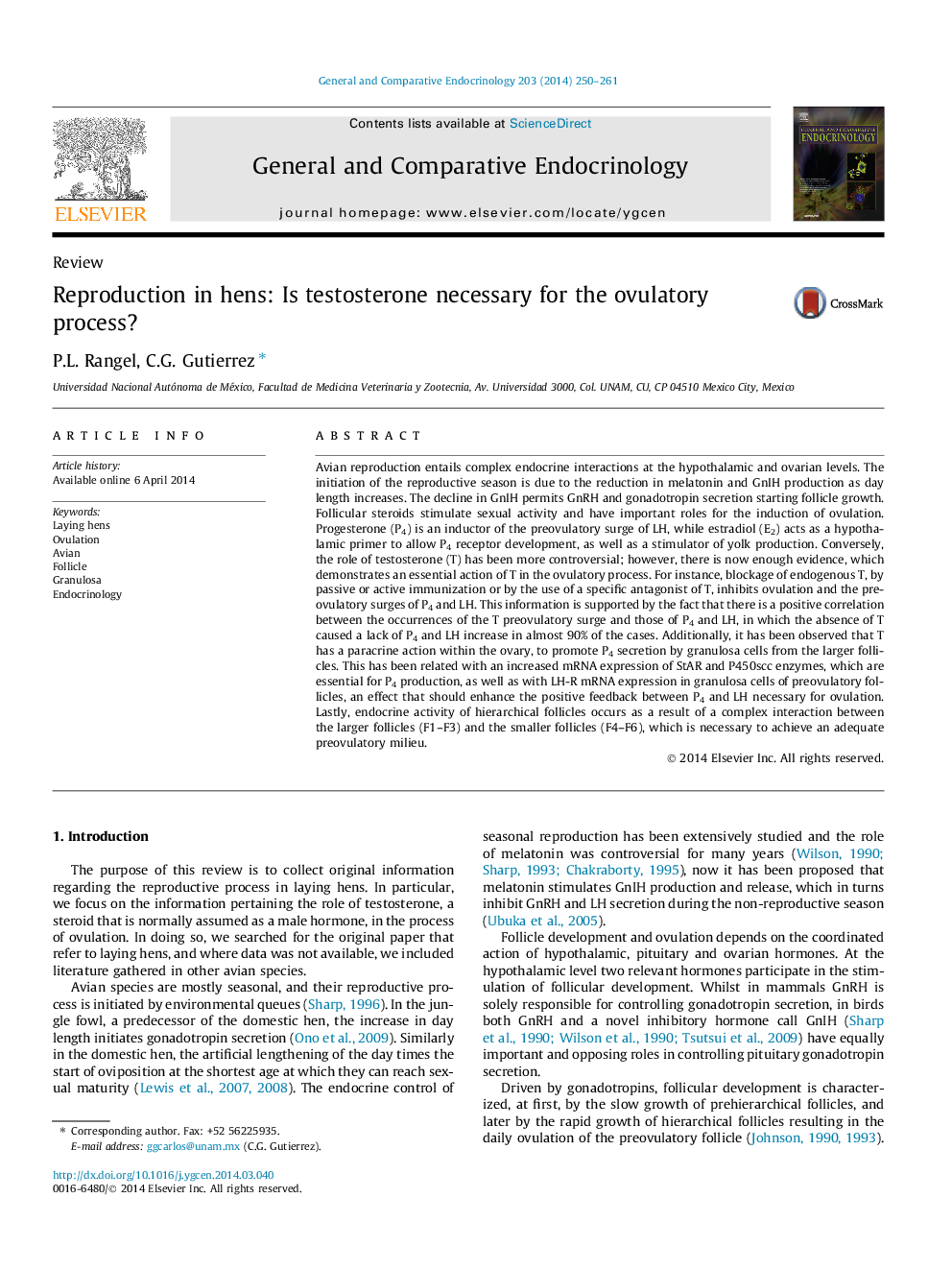| کد مقاله | کد نشریه | سال انتشار | مقاله انگلیسی | نسخه تمام متن |
|---|---|---|---|---|
| 5901070 | 1568902 | 2014 | 12 صفحه PDF | دانلود رایگان |
- The role of steroids in the ovulatory process of the domestic hen is discussed.
- Testosterone activity is needed for ovulation in laying hens.
- Endogenous testosterone stimulates progesterone and LH production.
- In vitro testosterone directly stimulates granulosa cell progesterone production.
Avian reproduction entails complex endocrine interactions at the hypothalamic and ovarian levels. The initiation of the reproductive season is due to the reduction in melatonin and GnIH production as day length increases. The decline in GnIH permits GnRH and gonadotropin secretion starting follicle growth. Follicular steroids stimulate sexual activity and have important roles for the induction of ovulation. Progesterone (P4) is an inductor of the preovulatory surge of LH, while estradiol (E2) acts as a hypothalamic primer to allow P4 receptor development, as well as a stimulator of yolk production. Conversely, the role of testosterone (T) has been more controversial; however, there is now enough evidence, which demonstrates an essential action of T in the ovulatory process. For instance, blockage of endogenous T, by passive or active immunization or by the use of a specific antagonist of T, inhibits ovulation and the preovulatory surges of P4 and LH. This information is supported by the fact that there is a positive correlation between the occurrences of the T preovulatory surge and those of P4 and LH, in which the absence of T caused a lack of P4 and LH increase in almost 90% of the cases. Additionally, it has been observed that T has a paracrine action within the ovary, to promote P4 secretion by granulosa cells from the larger follicles. This has been related with an increased mRNA expression of StAR and P450scc enzymes, which are essential for P4 production, as well as with LH-R mRNA expression in granulosa cells of preovulatory follicles, an effect that should enhance the positive feedback between P4 and LH necessary for ovulation. Lastly, endocrine activity of hierarchical follicles occurs as a result of a complex interaction between the larger follicles (F1-F3) and the smaller follicles (F4-F6), which is necessary to achieve an adequate preovulatory milieu.
Journal: General and Comparative Endocrinology - Volume 203, 1 July 2014, Pages 250-261
